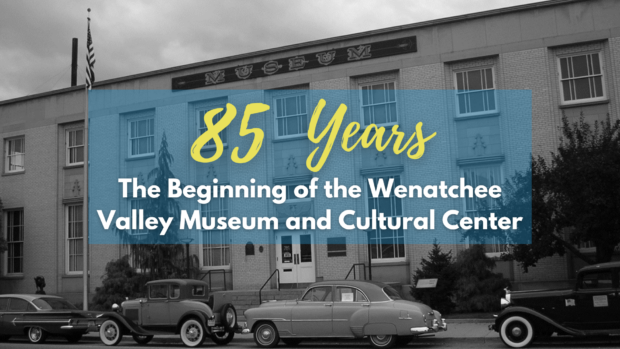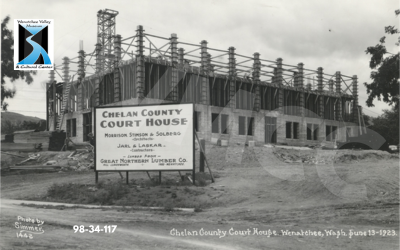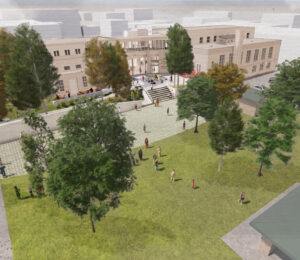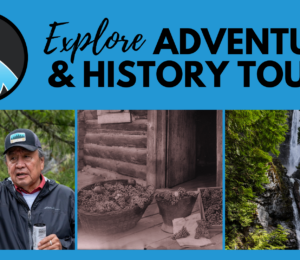The Beginning of the Wenatchee Valley Museum and Cultural Center – 4/26/2024
Over a century since its inception in the 1920s, the shape and size of the Wenatchee Valley Museum and Cultural Center have changed and grown alongside the Wenatchee Valley community. This year is the 85th Anniversary of the North Central Washington Museum, which is now known as the Wenatchee Valley Museum and Cultural Center.
The City of Wenatchee has provided a detailed account of the beginning developments of Wenatchee. Learn more about Wenatchee’s history here.
The idea of forming a historical society began in 1920 when a group of orchardists, businessmen, and doctors officially formed the Columbia River Archeological Society and unofficially formed the “Nut Club.” These members, who were not professional archeologists, would build personal museum collections in their own homes.
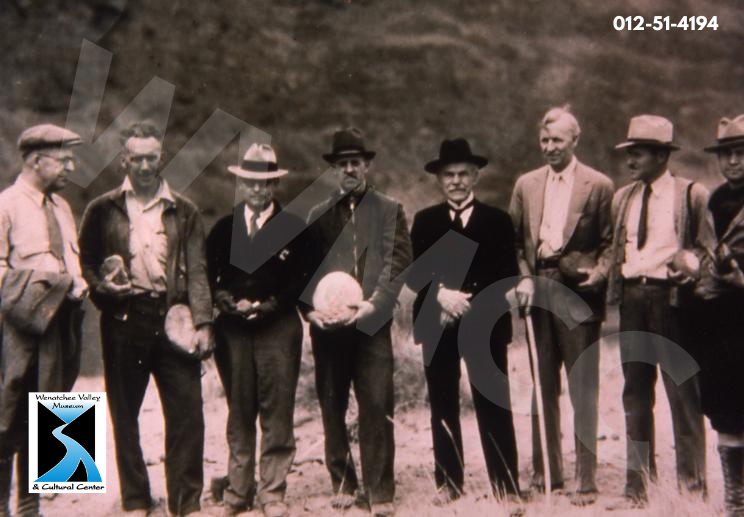
C. 1935, Adam East, Alan May, Dr. James H. Winstanley, K. P. Sexton, Dr. Ales Hrdliscka, Smithsonian archaeologist: Ralph Wood, Dr. John Gahringer and Art Freese.
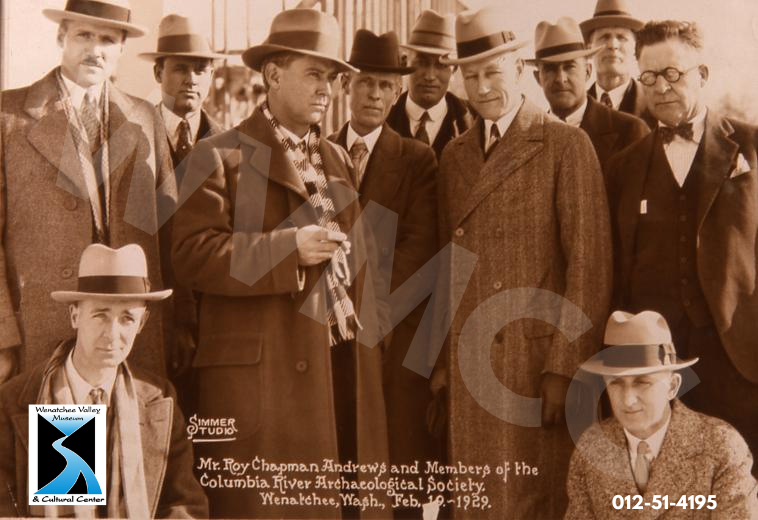
“I have been eight times around the earth, and I have not seen more intelligence and enthusiasm than that displayed by your own archaeological society,” published in the Wenatchee World on Feb. 20, 1929. Roy Chapman Andrews is supposedly the inspiration behind the “Indiana Jones” character.
These “Nuts” submitted a proposal in 1923 to use the basement of the newly constructed Chelan County Courthouse as a museum. But, lack of funds, concerns of supervision, and security brought their plans to a halt.
The first home for the museum was the Carnegie Building, which was built in 1912. Its namesake and funding came from the Andrew Carnegie grant. It originally housed the Wenatchee Library, who moved into the Carnegie building in 1918.
It was after the library’s departure in January of 1939 that the wheels of fate began to turn for the society. Soon, they set their sights on the Carnegie Building as the future home of North Central Washington’s first museum.
A passage from the Wenatchee World’s 80th Anniversary Souvenir Issue, “34 years – Museum holds city’s heritage,” details the history of the Columbia River Archeological Society.
“Many fine collections were built during this period but eventually interest in the group waned, so some of the leaders turned their thoughts to setting up a museum so that some of the finds might be on public display.”
According to this source, funding for museum operations was challenging to obtain due to Chelan County and the City of Wenatchee finalizing their budgets before January 1, 1939. The board members devised a solution to this dilemma, receiving donations of linoleum, paint, and labor for the indoor restoration of the building.
Representatives from the Wenatchee Chamber of Commerce and the Columbia River Archaeological Society formed a Museum Committee on February 27.
By March 1, the committee had selected the name “North Central Washington Museum” and adopted the Articles of Incorporation, making the museum an official establishment within the Wenatchee community.
“The articles of incorporation were signed by [Chairman] K. P. Sexton, [Vice Chairman] Alan G. May, [Secretary] A. V. Shephard, [Treasurer] Helen Brown, John Shaw Jr., J. H. Winstanley, John E. Gahringer, Ellen Goodfellow, Anetta Miller and R. E. Michael.”
The museum officially opened on April 27, 1939, opening in time for the Apple Blossom Festival. This year was also Washington State’s 50th Anniversary of statehood, earning Wenatchee a visit from Washington Governor Clarence D. Martin, who officially opened the museum.
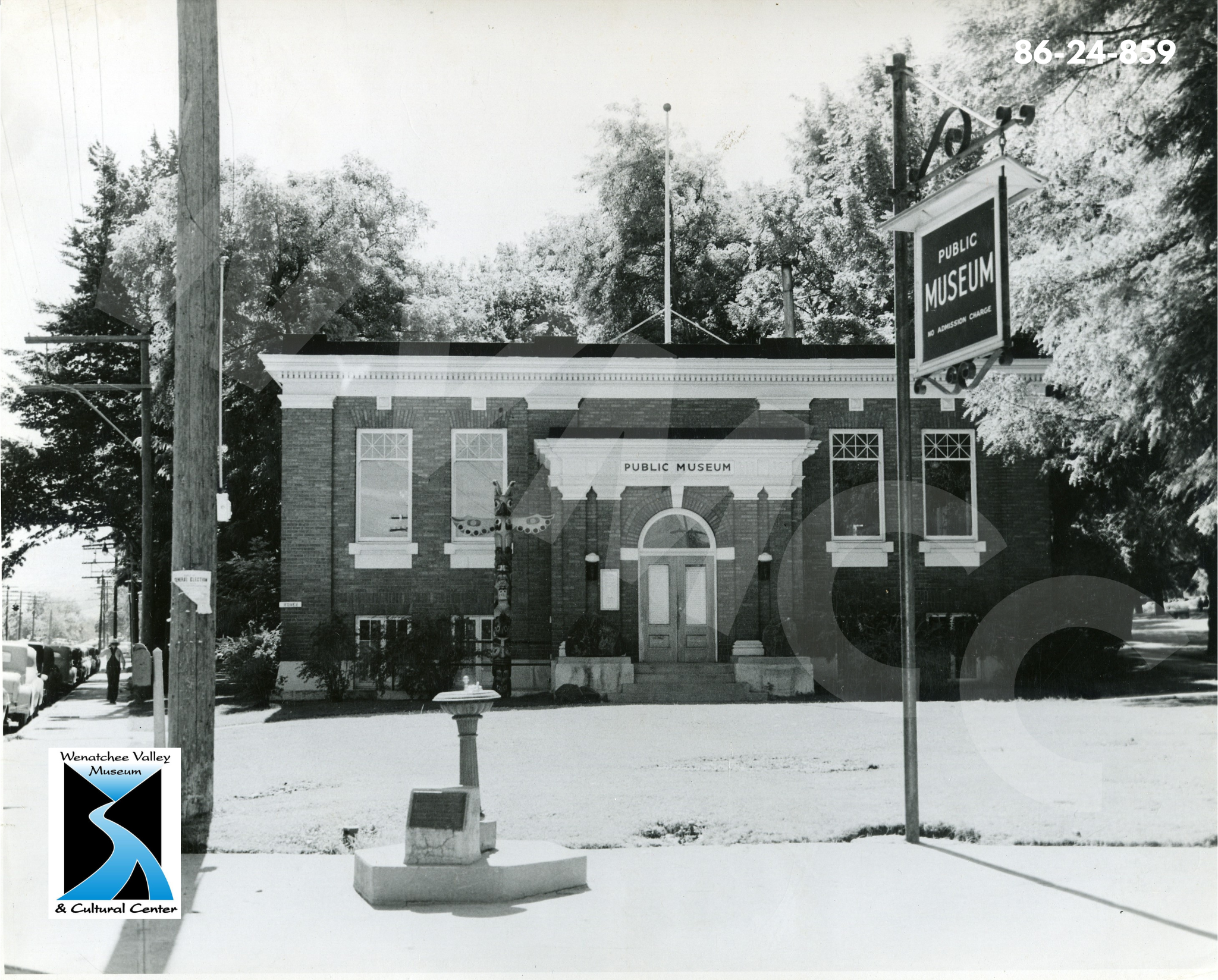
Source: Wenatchee Valley Museum and Cultural Center, no. 86-24-859. The Museum gets its first home and moves in to the Carnegie Building at 2 S. Chelan Ave. in 1939
Early exhibits focused on the Pangborn-Herndon trans-Pacific flight of 1931, geological minerals and fossils, relics from pioneer homes, Native-American artifacts, and other archeological artifacts.
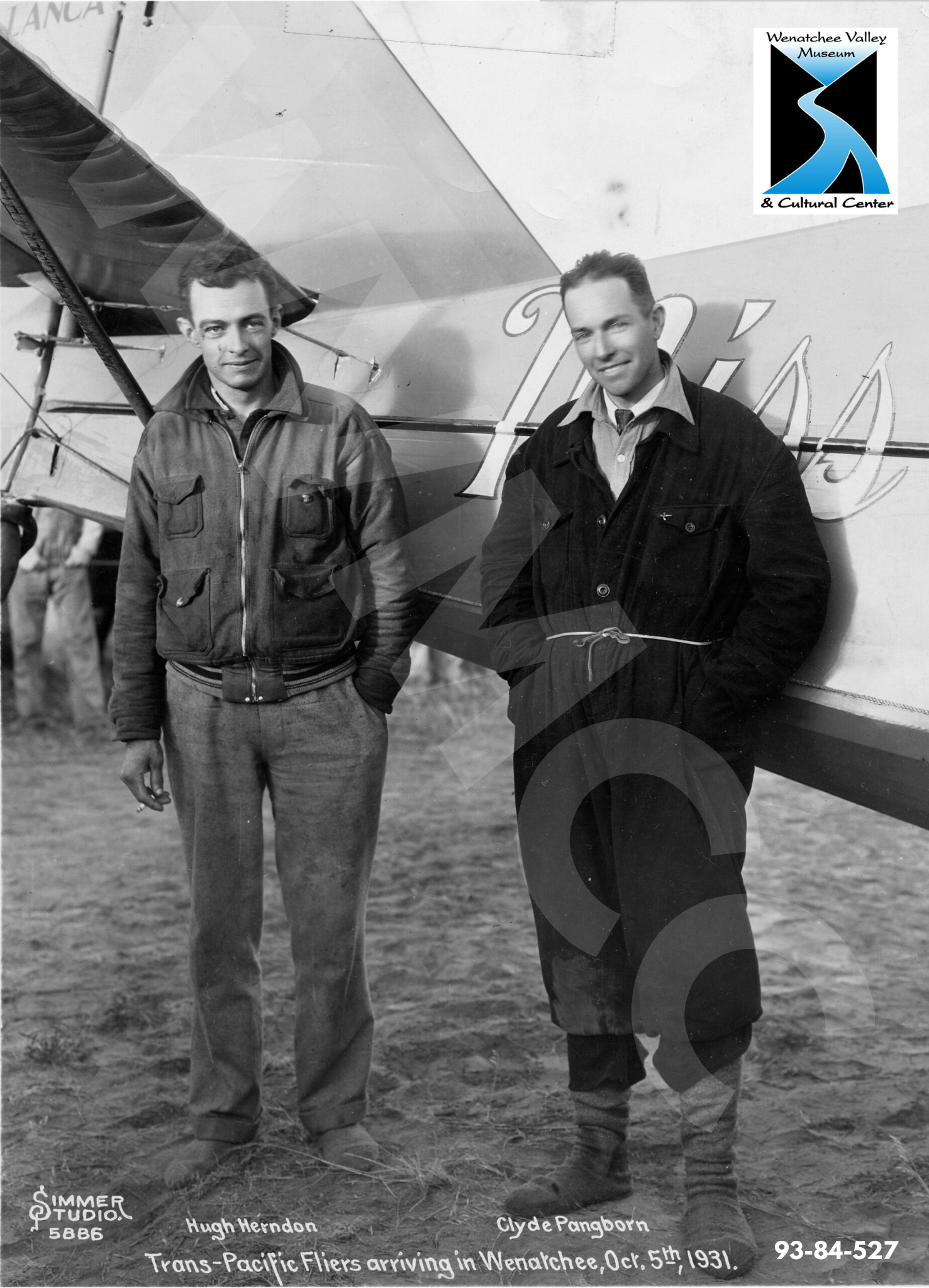
Source: Wenatchee Valley Museum and Cultural Center, no. 93-84-527. Pictured above is Clyde Pangborn (right) and Hugh Herndon (left), who completed the first non-stop, trans-Pacific flight from Sabishiro Beach, Japan to Wenatchee, Washington.
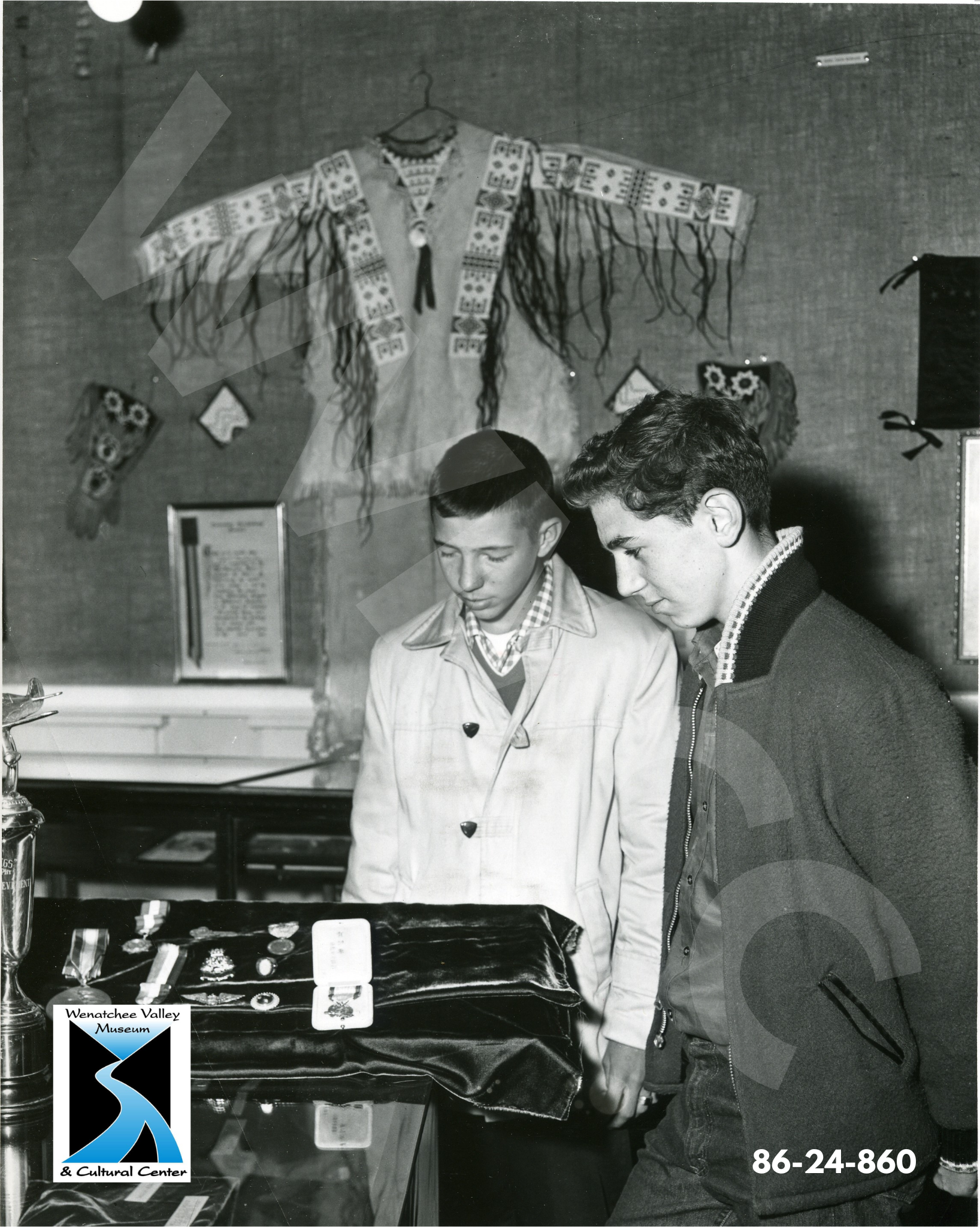
Source: Wenatchee Valley Museum and Cultural Center, no. 86-24-860. Two students look upon a display in the new museum
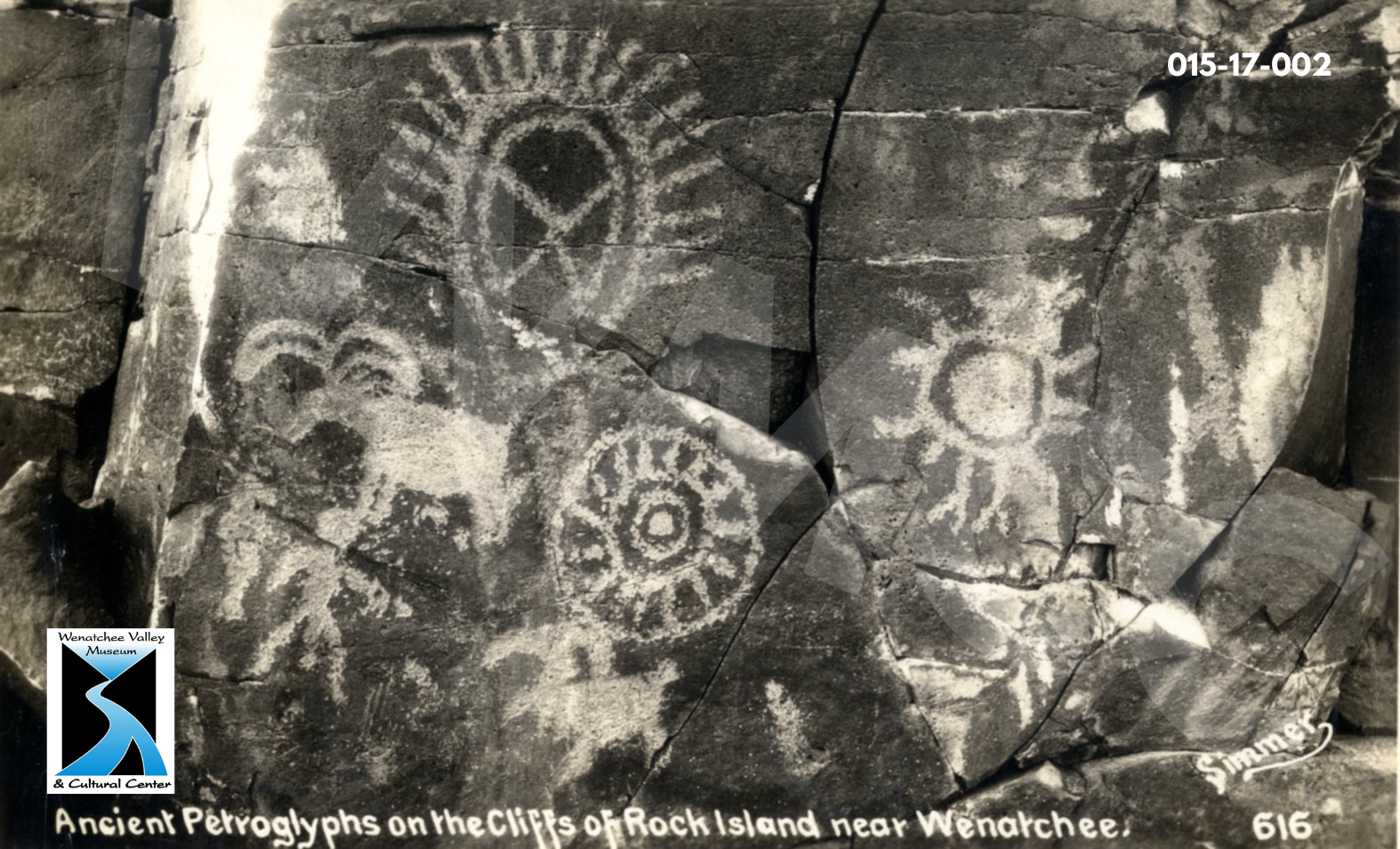
Source: Wenatchee Valley Museum and Cultural Center, no. 015-17-002. Major venture of the Columbia River Archaeology Society was documenting and saving the petroglyphs that were to be destroyed to make Rock Island Dam in 1929.
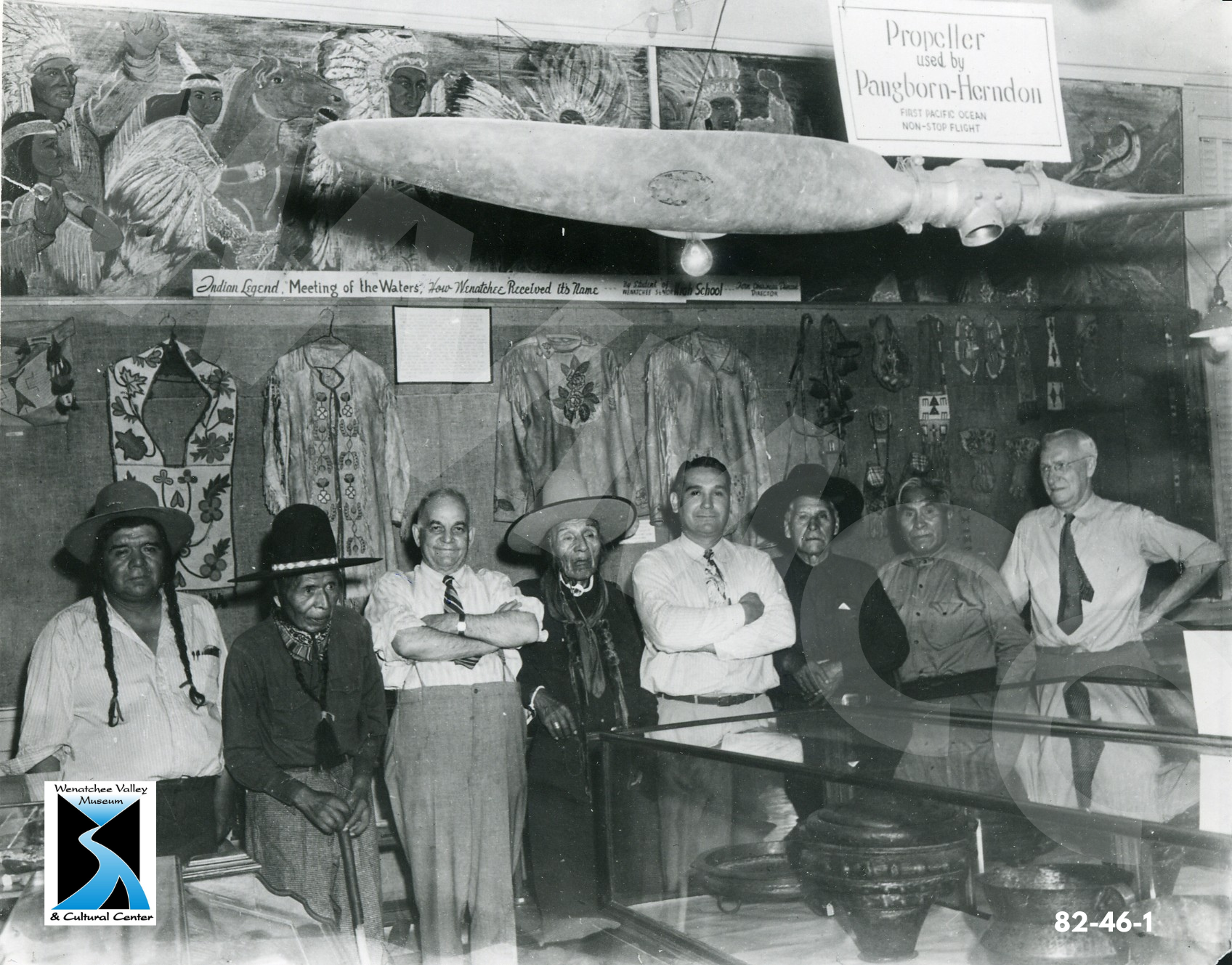
Source: Wenatchee Valley Museum and Cultural Center, no. 82-46-1. Harry Owhi, Yakama Tribe, Kittitas band; Willie Red Star Andrews, Nez Percé tribe; Rufus Woods, editor, Wenatchee Daily World; Cleveland Kamiakin (Peo-peo-cow-noot), Yakima-Palouse tribes; Unidentified; Chief Jim James (Wahq-ah-nyetsa), San Poil tribe; Harry Nanamkin (Qua-kah-laylh), Wenatchee-Yakima tribes; Ralph Wood, Museum Curator (1941-1950). Photo circa 1940s.
Wenatchee City Commissioners approved the museum’s move to the Carnegie building, at least until the end of 1940. It was this year when the prosecuting attorney ruled to cut funds for the museum, making the following years at the museum difficult. During that period, visitor admission fees funded the majority of operating expenses.
A.V. Shephard was the museum’s first curator, followed by Ralph Wood between 1941 and 1950. After Wood came Marion Sexton, who served as curator from 1950 to 1955, followed by Esta Braunwart from 1955 to 1962. The museum received its first professionally trained curator in the form of Grant Ericson in 1962. Ericson served until 1965, followed by Betty-Carol Shelton, who served until 1971.
On March 1, 1972, Beulah Davenport stepped away from the Wenatchee Daily World to serve as the museum’s Executive Director. This same year, Dick Bell joined the museum board.
But with progress comes growing pains, and the museum was once again looking to move and expand. Together, both Bell and Davenport brainstormed solutions to relieve their overflowing collections dilemma.
According to the Museum Connection’s 60th Anniversary newsletter:
“It was reported that the telephone line to Washington, DC was kept hot. Subsequently, the [Wenatchee] City Commission voted to purchase the recently vacated post office and the annex, which was housing the US Department of Agriculture whom in turn, leased their space from the City.”
With the museum growing, the museum team set their sights on the abandoned post office buildings. Read more about the museum’s move to the post office here.
This article is the first part of a four-part series detailing the 85-year journey of the Wenatchee Valley Museum and Cultural Center. Follow our website and social media for future updates on this blog series!

